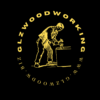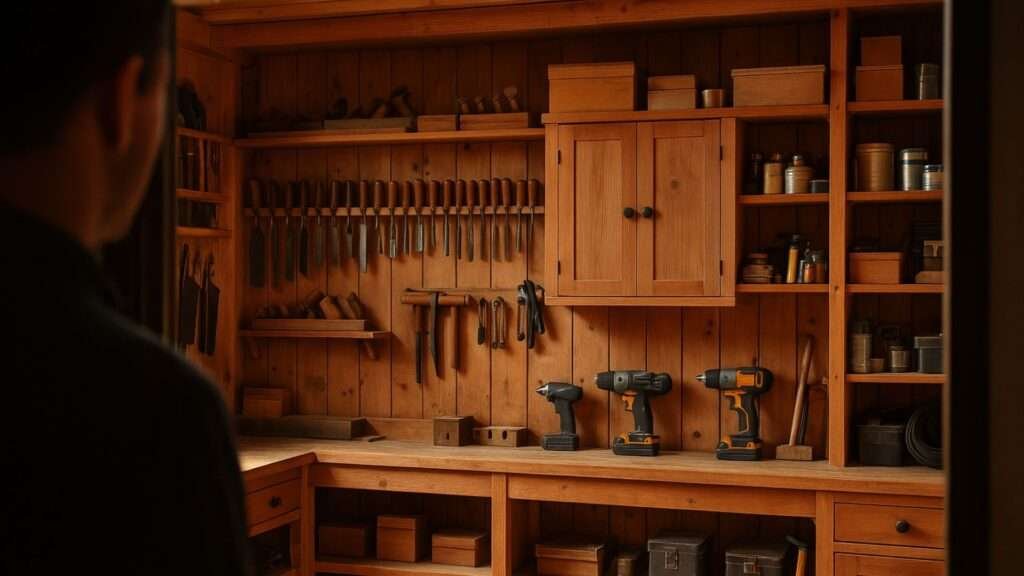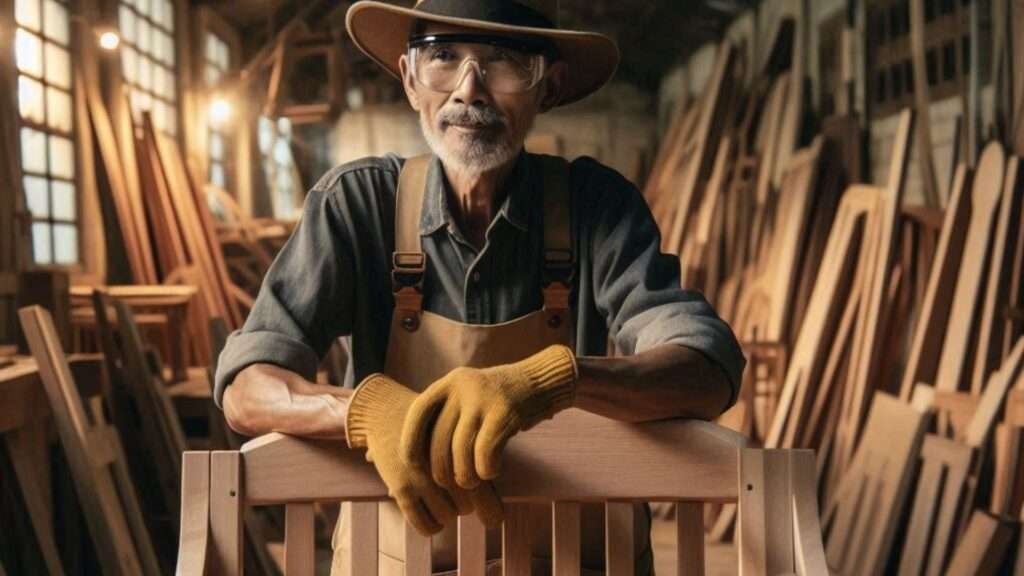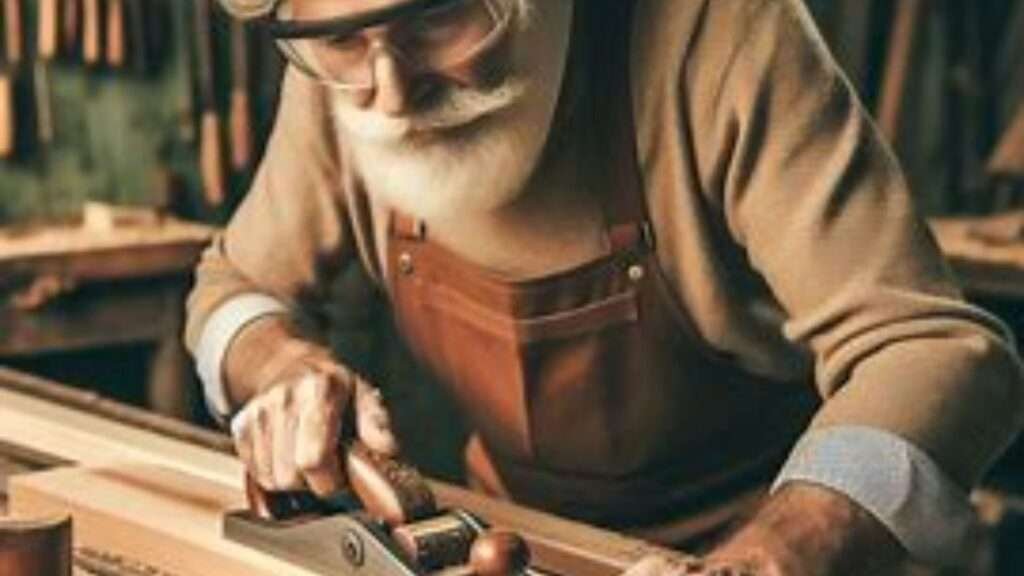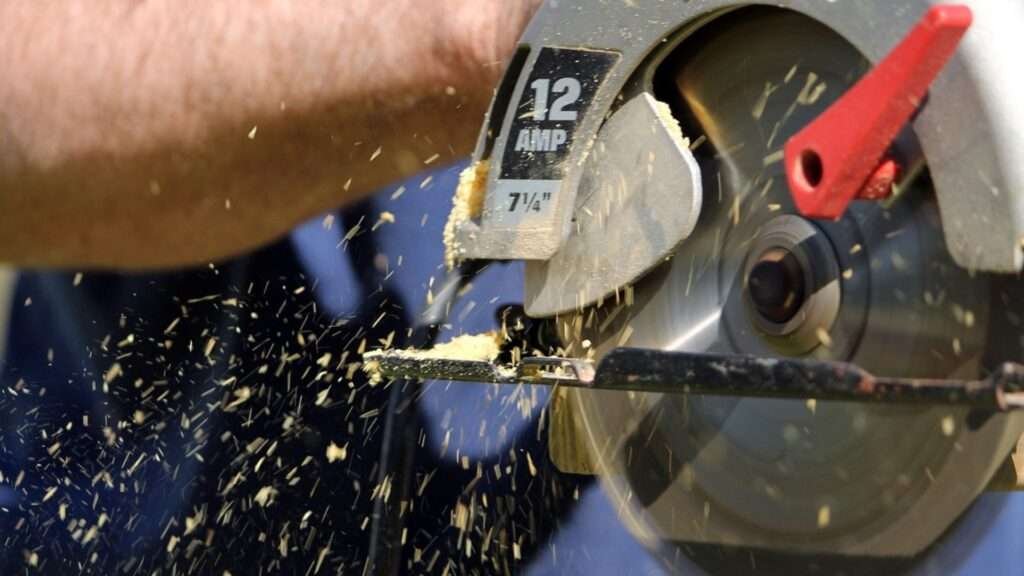The Hidden Marketing Goldmine That Is Woodworking.
Last week, as I was cleaning out my shed, a medium
size space lined with decades of well-used woodworking tools and equipment, I
experienced a moment of profound clarity.
Amid the dust and the nostalgic clutter, I calculated
the rough dollar value of my collection. At first, the number was slightly
unsettling but any unease soon gave way to deep satisfaction.
Each tool stood as a testament to how much I love
doing a bit of DIY from time to time and always having a good at making
something myself before caving in and buying that particular think.
The five main things that came to mind were:
1. Woodworking is more than a
hobby, it’s a powerful market with deep emotional ties Your personal attachment
to your tools and the satisfaction they bring highlight how woodworking
transcends mere functionality. The emotional connection people have with their
tools and DIY projects creates prime
opportunities for marketers to tap into aspirational and lifestyle branding.
2. Brand loyalty in
woodworking is significant and often subconscious Your routine purchases
from a single manufacturer suggest that marketing strategy—not just product
quality—can play a major role in consumer decision-making. The power of storytelling, advertising, and brand
positioning helps create deep-seated trust and preference among
woodworking enthusiasts.
3. Consumer behavior is
influenced by well-crafted marketing strategies Your reflection on
impulse purchases and the allure of hardware stores—even when you don’t need
anything—reveals how advertising and retail environments shape consumer habits. A
strong brand narrative and compelling marketing campaigns can make woodworking
products feel essential rather than optional.
4. The woodworking market
spans a broad spectrum of consumers From casual DIYers to seasoned craftsmen,
woodworking appeals to a wide audience. Many people invest in high-quality tools despite
infrequent use, showing that businesses can target niche
audiences with strategic messaging that appeals to long-term value and
practicality.
5. Marketing woodworking
tools and DIY culture requires more than just selling products—it requires
selling identity and passion Your realization that woodworking tools may
symbolize self-sufficiency,
creativity, and craftsmanship suggests that successful
marketing campaigns should emphasize experience,
empowerment, and skill-building rather than focusing solely on
the technical specifications of products.
It all related to a lifetime of part time passion with
an occasional wins and the foresight of having the right equipment, “just in
case” I might need it one day if struck by the desire to make something with my
own two hands.
In that quiet moment, it struck me: woodworking isn’t
merely a craft or a part time hobby; it’s a vibrant marketing and brand building
opportunity waiting to be tapped.
If a part-time woodworker like me can invest so
passionately in quality woodworking tools, equipment and related materials,
what global allure does the pursuit of woodworking hold for marketing
professionals?
I began questioning the root of my own buying behavior,
for instance, “Why am I so drawn to hardware stores on days when I don’t need
anything new?”
“Why am I so undisciplined towards very well marketed irresistible
deals?“
Is it simply a case of genuine need, or does a
well-executed brand narrative play a deeper role in my actions, has TV and Radio
advertising left some imprinting in my brain?
My thoughts quickly shifted to the sophisticated dance
between consumer behavior and marketing strategy.
Countless advertising agencies and brand builders have
undoubtedly worked behind the scenes, crafting messages that make quality tools
not merely desirable but essential.
This realization led me to appreciate the sheer size
of the woodworking community, from novices eager to learn woodworking skills to
seasoned professionals who swear by their trusted brands.
We are a group that isn’t afraid to invest our
hard-earned income in products that promise both function and innovation and in
some cases, people that might only use these things a few times a year.
I also noticed my own brand loyalty in the shed. For
instance, I have routinely purchased tools from one manufacturer over many
others.
Is it solely because their tools deliver superior
performance, or has their storytelling and marketing strategy built such a
strong connection that it nudges my decision-making?
Take my collection of hand drills as an example: three
different electric drills and two battery drills, there was surely some
redundancy there but I still considered this question, “Would I rush to replace
one of these drills if one failed tomorrow immediately, or would I manage with
one less drill because I had a sufficient number of them collecting dust on my
shelves?”
This internal debate mirrors a article I once wrote on
the role of marketing in the power tool industry, in particular an examination of circular
saws and how they were likely more than just a machine to most
people and may well be seen as symbol of DIY readiness, our passion to make things
occasionally and were without a doubt in my mind, something that was very easy
to promote.
With all that in mind, with this article, I will
explore the immense marketing value inherent in the woodworking space.
I’ll delve into the woodworking work and the skills
brand builders in this area might approach DIY and woodworking and the
entrepreneurial journey many hobbyists share.
I hope to uncover how a deep-seated passion for the
craft can translate into lucrative advertising ideas.
Whether the consumers involved are dedicated craftsman
or simply someone curious to learn woodwork and the interplay between consumer
behavior, brand loyalty and targeted
advertising.
I think we might see woodworking and related tools
from a new light by the time I reach the conclusion of this article and I hope
for some out there, this might provide an inspiring perspective.
Is The
Psychology of Woodworking Consumers Complex?
I find this a tough question to answer but broke this information down
into a few chunks:
Investment
Mindset:
I believe that woodworkers, regardless of the skills
and experience exhibit unique purchasing behaviors that marketing professionals
should find easy to understand and likely target.
Unlike casual hobbyists in other areas such as ‘remote
control boats’, I feel that woodworkers view tool purchases as long-term
investments.
They likely do research on an important tool or item
of equipment they’ll need and I think it is fair to say that they will
typically prioritize quality over price and will quite often develop lifelong
brand association.
This creates exceptional customer lifetime value
opportunities for companies that understand and serve the DIY and woodworking markets
effectively.
Quality-Driven
Decision Making:
The DIY and woodworking community will most likely over
time develop sophisticated quality assessment skills after years of hands-on
experience.
They will be able to differentiate between marketing
claims and actual performance, making them discerning but still highly valuable
customers.
I think there’s a lot of value associated with having
a popular person that has a passion for woodworking endorse a product or brand,
their recommendations would surely carry significant weight within multiple
networks.
Community-Centric
Culture:
I got the feeling that woodworkers who frequent social
media platforms develop tight-knit communities both online and sometimes offline
(as a result of the online discussions etc).
They share knowledge, showcase projects and actively
recommend products to fellow craftspeople and I noticed this most on YouTube.
Sure, they might be doing so to add wealth to their overall
equation via affiliate marketing or by creating quality video content that gets
a lot of views and allows them to make money from those efforts.
I’m don’t think there reason would matter for
promoting woodworking or DIY centric brands over those platforms.
If they are good at what they do and can convey their
message effectively, they are creating powerful word-of-mouth marketing that
will lead to people probably buying something.
So, the marketing opportunities within the culture and
many and varied and I believe would extend far beyond traditional advertising
reach.
Would There
Still Be Untapped Marketing Scope In Woodworking?
Yes, I believe there is and the key to identifying it
lies in a combination of Gap Analysis
and SWOT Analysis.
Gap Analysis: Identifying Market Deficiencies.
Gap analysis allows us to evaluate current market trends,
customer needs and product availability.
The goal is to envision a woodworking and DIY landscape
where more people feel empowered to take on projects in this space.
To uncover opportunities, we must identify existing gaps:
Which tools or
products aren’t selling well and why?
Is there a shortage
of educational resources such as courses, instructional guides, or YouTube
tutorials?
Are there underrepresented
demographics that could be better engaged?
What barriers
exist? Are pricing, accessibility, lack of
marketing preventing growth?
By understanding the reasons behind these gaps, we can craft a
strategy to bridge them. But identifying market gaps alone isn’t enough, we’d need
to assess both internal and external factors influencing woodworking’s
potential and that’s where SWOT
analysis comes in.
SWOT Analysis: Evaluating Market Position.
By applying SWOT
analysis, we’d be able to examine woodworking’s marketing scope
in greater depth:
Strengths: It’s typically a thriving DIY community, every increasing interest in
woodworking and DIY craftsmanship exists and a wide range of available tools.
Weaknesses: Is there limited visibility of lesser-known woodworking tools, a lack
of hands-on experience due to online purchasing dominance and the perception
that woodworking requires hard to learn specialized skills?
Opportunities: Could we expand on educational resources (courses, tutorials) and targeting
underrepresented audiences, thus addressing product variety gaps and improving
accessibility (such as in-store demonstrations).
Threats: There will be some market saturation in certain categories, likely pricing
barriers for beginners wanting to “just see how they go” for a while and there
surely will be some competition from alternative home-improvement sectors and
fluctuating consumer interest.
What’s The Strategic Approach?
A marketing professional would be able to use insights
from both gap analysis
and SWOT analysis
to create a strategic plan for bridging these divides, whether through targeted
promotions, enhanced accessibility or specialized content creation.
Developing advertising
content for underrepresented audiences and niche segments could
reveal valuable opportunities and drive engagement in woodworking.
Would It Be A Content
Marketing Goldmine?
Assuming you would be creating content for only the
sub-niche of this niche or the lesser sold tools rather than the tools most
people would have, I think building a marketing eco-system around certain woodworking
projects that would or could be completed using ‘the road less travelled’ is
the key.
As long as marketing people offer rich and interesting
content, those that specialize in brand building could then step in and setup sponsor
project tutorials, provide technical education and showcase product
applications in real-world scenarios that would boost in the target areas.
This would likely attract new audiences and
potentially engage them and would and position retail companies for new
opportunities and could even influence the supply chain this targeted space.
Would There Be Influencer
Partnership Potential?
Yes, and I think professional woodworkers and skilled
hobbyists would be the ones to approach as they would likely maintain
significant social media followings.
Unlike traditional influencers, woodworking
influencers (regular content creators) have built their audiences through
demonstrated expertise and authentic passion. Partnerships with these creators would
I think offer brands and brand builders access to ‘keen to learn’ and relevant
audiences.
Educational
Marketing Strategies.
The woodworking community seems to value continuous
learning.
As such hardware stores, tool companies could better leverage
this by offering workshops, online courses and technical resources.
These educational initiatives would surely build at
least some brand loyalty while positioning themselves nicely in an industry that
I believe values partners more than it does simple suppliers.
Brand Building Via
Craftsmanship Association.
Authenticity and
Heritage Marketing:
Woodworking
naturally evokes themes of tradition, craftsmanship and authenticity and these
are values that resonate broadly.
By emphasizing
the “handcrafted” aesthetic and meticulous attention to detail,
brands can leverage these associations to elevate their market positioning.
This approach would
not only be effective for companies within the woodworking space but also for
those in seemingly unrelated industries looking to inject a sense of heritage
and trust into their narrative.
Premium
Positioning Opportunities:
The woodworking
market demonstrates that consumers are sometimes willing to pay a premium for
quality products imprinted with genuine value.
This willingness
provides a clear avenue for brands to position their offerings above the
standard price range while still maintaining strong demand.
By championing
quality and craftsmanship in their messaging, companies can justify higher
price points and attract discerning buyers who view these attributes as
essential.
Cross-Industry
Applications:
The precision,
durability and attention to detail inherent in woodworking create powerful
parallels that can be applied to other industries.
For instance, companies in automotive or technology sectors can draw on the same meticulous standards prized in woodworking. This cross-industry application of craftsmanship ideals helps to reinforce brand messaging and highlights a commitment to excellence, regardless of the field.
Digital Marketing Strategies for the Woodworking Market.
Visual
Storytelling:
Woodworking
projects offer a compelling visual narrative, the transformation of raw
materials into finished masterpieces creates a natural before-and-after
dynamic.
I think the key
would be to have use the start, middle and end stories and use the ‘middle’
section to do the product placement and the end section to mention where people
could find the items mentioned earlier etc.
This narrative
can be harnessed to produce engaging content for social media platforms,
strengthening a brand’s visual identity while showcasing the tangible results
of hard work and skill.
Technical
Content Marketing:
The woodworking
community highly values detailed and technical insights.
Brands can build
credibility by producing in-depth guides, comparison articles, and product
specifications that empower consumers to make informed purchasing decisions.
This form of
content not only educates but also reinforces a brand’s status as a trusted
authority in the craft.
Community
Platform Engagement:
Online
communities, forums and social media groups dedicated to DIY and woodworking
are vibrant hubs of engagement.
By participating
in these spaces, providing expertise and practical advice rather than overt
promotion, brands could form some lasting relationships.
Such genuine interactions help to cultivate trust and create a sense of belonging within these communities.
Measuring Success in Woodworking Marketing.
Engagement
Quality Metrics:
Traditional
metrics like reach and impressions often fall short in capturing the true
impact of marketing within the woodworking world.
Instead, I think focusing
on engagement quality is key, such as community participation, meaningful
dialogue and recommendation rates, these stats would offer more accurate
pictures of campaign effectiveness and the strength of customer relationships.
Long-Term
Relationship Building:
Success in
woodworking-related marketing seems to hinge on patience and the cultivation of
genuine relationships.
Investing in
long-term engagement strategies leads to customer loyalty and robust
word-of-mouth advocacy.
Although the process requires time, the resulting competitive edge is both sustainable and highly rewarding.
Implementation Strategies for Brands.
Start with
Education:
Brands entering
the woodworking space should prioritize educational content over direct
promotion.
By offering
tutorials, practical tips and technical insights, companies could build
credibility and establish themselves as knowledgeable resources.
This educational
approach lays a strong foundation for trust and long-term consumer engagement.
Partner with
Practitioners:
Collaborating with
experienced woodworkers would be idea, whether they are professionals or
dedicated but skilled hobbyists, these people cold and probably already do infuse marketing
initiatives with authenticity and expertise.
Such genuine
partnerships serve as a testament to a brand’s commitment to the craft,
fostering credibility that purely commercial efforts often struggle to achieve.
Invest in
Quality Associations:
Given the
woodworking community’s discerning nature, it is essential for brands to align
their messaging and products with high-quality standards.
Cutting corners
(unless that’s somehow the target niche?) will quickly be spotted, so
consistent quality should be the cornerstone of any marketing strategy.
This commitment to excellence reinforces the brand’s reputation and ensures long-term loyalty.
Future Opportunities in Woodworking Marketing.
Technology
Integration:
As traditional
woodworking increasingly intersects with modern technology, we can think along
the lines of CNC machines, digital design tools and smart workshop equipment.
I can’t help but
think there’s some new marketing opportunities in this arena.
Brands might be
able to capitalize on this convergence by positioning themselves as innovators
who honor tradition while embracing cutting-edge advancements. This balance
between heritage and innovation appeals to both classic enthusiasts and
tech-savvy consumers.
Sustainability
Marketing:
Woodworking’s
deep ties to natural materials and sustainable practices offer brands a
powerful narrative for sustainability marketing.
By aligning
themselves with eco-friendly practices and responsible sourcing, companies can
tap into the growing consumer demand for environmentally conscious products,
enhancing their appeal across multiple demographics.
Skills
Development Programs:
Corporate
initiatives that incorporate woodworking into skills development programs offer
multifaceted benefits.
These programs,
which can serve as team-building exercises or stress-relief activities, not
only deliver practical value but also connect participants with the timeless
values of craftsmanship.
For brands, this
represents an opportunity to create enriching experiences that build lasting
positive associations.
Conclusion: Is
A Woodshop A Marketing Laboratory In Waiting?
Certain aspects
of the woodworking community represent some unique opportunities for marketing
professionals who are ready to approach it with respect, authenticity and a
commitment to genuine value creation.
Just as the tools
in a well-organized workshop require careful investment, maintenance and an
appreciation for quality, so too does successful marketing in this space.
Brands that truly
understand and serve this community will I think discover not just customers,
but passionate advocates who embody the timeless values of craftsmanship,
quality and expertise.
The woodshop/backyard
shed/converted garage etc are all places where woodworking can take place with
all its tangible creativity, these spaces are not just a space for crafting
products, it is a dynamic laboratory for those who working in advertising to build
meaningful brand relationships that resonate far beyond the confines of
woodworking.
In our
increasingly digital world, the tangible, authentic nature of woodworking
offers brands an unparalleled path to forge genuine connections with consumers
seeking real value and lasting quality.
The real question
is not whether woodworking presents a valuable marketing opportunity, but
whether brands are prepared to invest the time and passion necessary to engage
with this remarkable community on its own terms.
